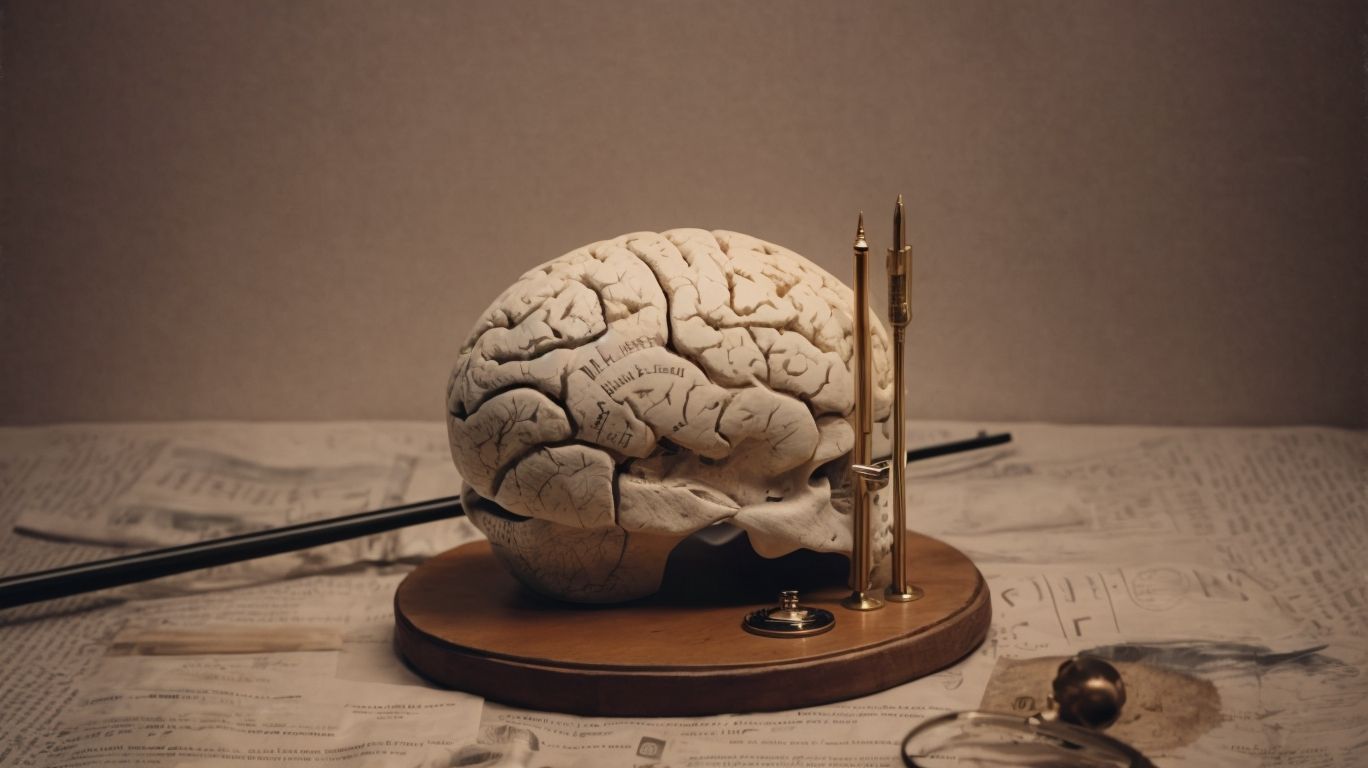Phineas Gage may not be a household name, but his story is a fascinating and crucial one in the field of psychology. After a traumatic accident that left him with a severe brain injury, Gage underwent a dramatic transformation in personality.
This case not only shed light on the intricate workings of the brain but also raised important ethical questions about studying individuals’ personal lives. Today, Phineas Gage’s case continues to influence modern neuroscience and psychology, making it a tale worth exploring.
Contents
- 1 Who Is Phineas Gage?
- 2 What Happened to Phineas Gage?
- 3 How Did Phineas Gage’s Accident Change His Personality?
- 4 What Did Phineas Gage’s Case Teach Us About the Brain?
- 5 What Are the Implications of Phineas Gage’s Case on Psychology?
- 6 What Are the Ethical Considerations of Studying Phineas Gage’s Case?
- 7 What Are the Modern Applications of Phineas Gage’s Case?
- 8 Frequently Asked Questions
- 8.1 Who was Phineas Gage and what is his significance to psychology?
- 8.2 What happened to Phineas Gage that led to his significance in psychology?
- 8.3 How did Phineas Gage’s case change the understanding of the brain in psychology?
- 8.4 What were some of the behavioral changes observed in Phineas Gage after his injury?
- 8.5 How did Phineas Gage’s case contribute to the field of neuropsychology?
- 8.6 What is the lasting legacy of Phineas Gage’s case in psychology?
Who Is Phineas Gage?
Phineas Gage, a historical figure in neuroscience and psychology, is known for his remarkable case of surviving a severe brain injury.
Phineas Gage’s story dates back to the 19th century when he worked as a railroad construction foreman in Vermont. In 1848, a horrific accident involving an iron rod penetrated his skull, causing significant damage to his frontal lobe, which was previously a mystery in terms of its impact on behavior. Gage’s survival and subsequent behavioral changes fascinated researchers and paved the way for groundbreaking studies on the brain’s role in personality and decision-making.
What Happened to Phineas Gage?
Phineas Gage’s life took a drastic turn when a tamping iron pierced through his skull in a traumatic accident, leading to a profound brain injury.
Phineas Gage, a railroad foreman, was working on the Rutland and Burlington Railroad, where the accident occurred on September 13, 1848. The tamping iron, weighing over 13 pounds and 3 feet 7 inches long, entered his left cheek, passed behind his left eye, and exited through the top of his head.
This incredibly rare injury, caused by the iron’s explosion, dramatically altered Gage’s personality and behavior. The damage to his brain’s frontal lobe resulted in significant mental and emotional changes, turning him from a responsible and mild-mannered man into an impulsive and irritable individual.
How Did Phineas Gage’s Accident Change His Personality?
Phineas Gage’s accident led to a remarkable transformation in his personality, as documented by his physician, John Martyn Harlow, highlighting the role of the frontal lobes in behavior.
Harlow’s meticulous observations of Gage’s post-accident behavior shed light on how damage to specific brain regions can deeply influence one’s character and decision-making abilities. Gage’s once reliable and responsible nature gave way to impulsivity and mood swings, demonstrating the intricate connection between brain physiology and personality traits. Through Gage’s case, neuroscientists gained valuable insights into the brain’s intricate workings and the crucial functions of the frontal lobes in regulating emotions and social behavior. This seminal event in the history of neuroscience continues to shape our understanding of brain plasticity and behavior.
What Were the Specific Changes in His Personality?
The specific changes in Phineas Gage‘s personality post-accident were profound, affecting his behavior, cognition, and emotional responses, offering valuable insights into the interconnected nature of psychological and neurological functions.
Following the unfortunate incident where Phineas Gage suffered a severe brain injury, his once calm and responsible demeanor transformed drastically. Previously known for his diligence and strong work ethic, he became impulsive, short-tempered, and prone to erratic behavior.
Gage displayed a lack of empathy and social awareness, often exhibiting inappropriate behaviors in social settings. These alterations in his personality highlighted the intricate relationship between brain structures and how they regulate emotional processing and social behavior.
What Did Phineas Gage’s Case Teach Us About the Brain?
Phineas Gage’s case emerged as a pivotal case study that revolutionized our understanding of brain topography and provided crucial scientific evidence linking brain functions to behavior.
His story of surviving a severe brain injury in a railway construction accident in 1848, where a iron rod pierced through his skull, changed the landscape of neuroscience. Gage’s case highlighted the significance of the frontal lobe in regulating social behavior, decision-making, and emotional processing. The documented changes in his personality post-accident paved the way for in-depth exploration of the brain-behavior relationship.
What Parts of the Brain Were Affected in Phineas Gage’s Case?
The brain areas primarily affected in Phineas Gage’s case were the frontal cortex and prefrontal cortex, regions crucial for executive functions and behavioral regulation, highlighting the severe impact of brain trauma on these key areas.
The frontal cortex plays a vital role in decision-making, problem-solving, and emotional control. It is involved in regulating social behavior, impulse control, and personality expression. Conversely, the prefrontal cortex is responsible for planning, attention, and goal-directed behavior. Damage to these regions can lead to deficits in executive functions, such as reasoning, judgment, and self-control.
In Phineas Gage’s case, the injury resulted in significant changes in his personality and behavior, highlighting the intricate connection between brain regions and cognitive functions. By studying cases like Gage’s, researchers have gained valuable insights into the neuroscience of executive functions and the brain’s role in regulating behavior.
What Did We Learn About the Functions of These Brain Areas?
The insights gained from Phineas Gage’s case extended our understanding of neurological functions, rehabilitation strategies, and the interdisciplinary field of neuropsychiatry, paving the way for advancements in brain injury treatment and behavioral disorders.
Phineas Gage’s case remains a landmark in the history of neuroscience, illustrating the intricate connection between brain injury and subsequent behavioral changes.
Researchers and clinicians have drawn valuable lessons from his experience, demonstrating the brain’s remarkable ability to rewire and adapt following trauma.
His case prompted the development of innovative rehabilitation techniques tailored to address specific cognitive deficits, emphasizing the importance of individualized treatment plans in neuropsychiatric care.
What Are the Implications of Phineas Gage’s Case on Psychology?
Phineas Gage’s case had profound implications on the field of psychology, shedding light on the effects of brain surgery and the emergence of psychosurgery as a treatment approach for behavioral disorders.
His story serves as a monumental milestone in understanding how specific regions of the brain can impact personality, behavior, and decision-making. The irreversible changes in Gage’s once amiable personality after the accident highlighted the intricate relationship between brain structures and cognitive functions.
In the realm of psychosurgery, Gage’s case played a crucial role in pioneering treatments that aimed to directly alter brain structures to address severe psychiatric conditions. This paved the way for groundbreaking research in neuropsychology and the evolution of surgical interventions for mental health disorders.
How Did Phineas Gage’s Case Influence the Study of Brain Injuries?
Phineas Gage’s case exerted a significant influence on the study of brain injuries, inspiring research endeavors at prestigious institutions such as Harvard Medical School and the University of Melbourne.
Researchers around the globe have been fascinated by the unique insights that Gage’s case offers into the complexities of the human brain. At Harvard Medical School, pioneering studies have delved into the intricacies of traumatic brain injuries, building upon Gage’s legacy to advance treatment modalities.
Similarly, the University of Melbourne has been at the forefront of cognitive neuroscience research, utilizing advanced imaging techniques to explore the regions of the brain that were impacted in Gage’s case. This interdisciplinary approach has revolutionized our understanding of neuroplasticity and the brain’s capacity for recovery.
What Did Phineas Gage’s Case Reveal About the Connection Between Brain and Behavior?
Phineas Gage’s case unveiled a profound connection between the brain and behavior, shaping the understanding of behavioral disorders and providing historical and scientific evidence to support this crucial link.
Upon surviving a traumatic brain injury that fundamentally altered his personality, Gage became a subject of fascination for neuroscientists and psychologists alike. His case highlighted how damage to specific brain regions can lead to remarkable changes in one’s emotions, social interactions, and decision-making abilities.
Neuroplasticity, the brain’s ability to reorganize itself by forming new neural connections, was a concept that gained significant traction through Gage’s story. This raised crucial questions about the brain’s adaptability and the intricate interplay between its structure and behavior.
What Are the Ethical Considerations of Studying Phineas Gage’s Case?
The exploration of Phineas Gage’s case raises ethical considerations concerning informed consent, the ethical implications of studying personal lives, and the balance between medical curiosity and ethical boundaries.
When diving into the historical record of Phineas Gage’s life, researchers must navigate the complex terrain of privacy and respect for the individual. Ethical dilemmas emerge as scholars grapple with the implications of sharing personal details, balancing the advancement of knowledge with the rights of those involved. It is crucial to reflect on the boundaries of medical research and the societal impact of such studies. Ethical responsibilities extend beyond mere curiosity, requiring thoughtful consideration of the implications of each discovery.
Was There Informed Consent in Phineas Gage’s Case?
The issue of informed consent in Phineas Gage’s case remains a subject of debate, reflecting the nuances of medical folklore and the historical context surrounding his association with institutions like Harvard University and the Burlington Rail Road.
Phineas Gage’s case, one of the most striking examples in neuroscience history, sparks discussions on the ethical aspects of patient consent. Gage’s unfortunate injury, caused by a tamping iron piercing his skull, not only impacted his personality but also raised pivotal questions regarding medical practices during the mid-19th century.
Harvard University’s ties to Gage’s case through Dr. John Harlow, the physician who treated him, bring forth intricate dynamics between academia and medical treatment. The Burlington Rail Road, where Gage worked, adds a layer of industrial context to the narrative, highlighting the intersection of modern transportation and medical care.
What Are the Ethical Implications of Studying a Person’s Personal Life and Behavior?
Delving into the personal life and behavior of individuals like Phineas Gage raises ethical questions in psychology, accentuated by artifacts like the daguerreotype preserved at the Warren Anatomical Museum.
When exploring the lives of historical figures such as Phineas Gage, there is a delicate balance between gaining knowledge and respecting privacy. The daguerreotype of Gage at the Warren Anatomical Museum serves as a visual reminder of the intersection between science and ethics. Such artifacts offer a glimpse into the past, but they also prompt debates about consent, dignity, and the boundaries of research.
What Are the Modern Applications of Phineas Gage’s Case?
The legacy of Phineas Gage’s case resonates in modern neuroscience and rehabilitation practices, offering scientific evidence and insights that continue to shape contemporary approaches to brain trauma and behavioral disorders.
Phineas Gage’s case serves as a pivotal example in the history of neuroscience, highlighting the intricate connection between brain function and behavior. By surviving a severe brain injury, Gage unintentionally contributed to the understanding of brain plasticity and the localization of cognitive functions. This landmark case sparked a new era of research, leading to discoveries that have revolutionized how we perceive and address neurological conditions. The findings from studying Gage’s case have paved the way for innovative treatments and interventions in brain trauma rehabilitation, emphasizing the importance of personalized care and holistic approaches.
How Is Phineas Gage’s Case Used in Neuroscience and Psychology Today?
Phineas Gage’s case continues to serve as a foundational reference in contemporary neuroscience and psychology, influencing research initiatives at institutions such as the University of Melbourne and advancing discussions on brain surgery and psychosurgery.
His life-altering accident in 1848, where an iron rod penetrated his skull, drastically changed his personality and behavior. This case study provided crucial insights into the brain’s role in regulating emotions and social behavior, paving the way for modern understanding of cognitive functions.
- The University of Melbourne has been at the forefront of utilizing Gage’s case in cutting-edge research, applying neuroimaging techniques to delve deeper into the neural mechanisms underlying personality changes.
- The evolving discourse on psychosurgery has been significantly shaped by Gage’s story, leading to more ethical considerations and refined surgical approaches in treating psychiatric disorders.
Frequently Asked Questions
Who was Phineas Gage and what is his significance to psychology?
Phineas Gage was a railroad worker who survived a severe brain injury in 1848, making him a famous case study in the field of psychology. His injury and subsequent behavioral changes shed light on the brain’s functions and the link between brain and behavior.
What happened to Phineas Gage that led to his significance in psychology?
Phineas Gage’s injury occurred when a tamping iron was accidentally shot through his skull, damaging his prefrontal cortex. This resulted in significant changes to his personality and behavior, which were observed and documented by his doctor, Dr. John Harlow.
How did Phineas Gage’s case change the understanding of the brain in psychology?
Before Phineas Gage’s case, it was believed that the brain was a single unit responsible for all functions. However, his injury and subsequent changes in behavior challenged this belief and led to the understanding that different parts of the brain are responsible for different functions.
What were some of the behavioral changes observed in Phineas Gage after his injury?
Phineas Gage’s injury resulted in significant changes to his personality, temperament, and social behavior. He became more impulsive, irritable, and showed a lack of planning and foresight, which were not characteristics of his previous self.
How did Phineas Gage’s case contribute to the field of neuropsychology?
Phineas Gage’s case study provided valuable insight into the brain’s functions and the link between brain and behavior. This led to the development of neuropsychology, a field that studies the relationship between brain function and behavior.
What is the lasting legacy of Phineas Gage’s case in psychology?
Phineas Gage’s case continues to be a significant and intriguing story in the field of psychology. It has contributed to our understanding of brain damage and its effects on behavior and has also influenced the development of modern neuroscience techniques and methods.



